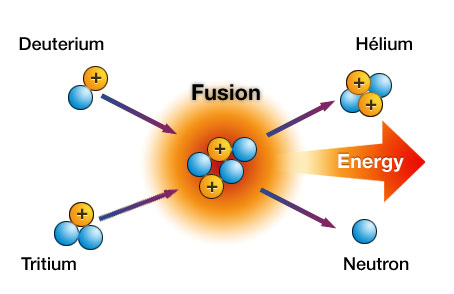Working of Fusion Technology in Energy:
Fusion Technology in Energy is produced in this process by the combination of two light nuclei to form a single heavier one under sustained conditions of extremely high temperatures (in millions of degree centigrade). Fusion is futuristic. Generation of electricity via fusion would solve the long-term energy needs of the world with minimum environmental problems.
A commercial reactor is expected by 2010 AD. Considering radioactive wastes, the impact of fusion reactors would be much less than the fission reactors. In case of success in fusion technology sometime in the distant future or a breakthrough in the pollution-free solar energy, FBRs would become obsolete. However, there is an intense need today to develop FBR technology as an insurance against failure to develop these two technologies.
In the past few years, serious doubts have been raised about the safety claims of nuclear power plants. There have been as many as 150 near disaster nuclear accidents from the Three-mile accident in USA to the recent Chernobyl accident in the former USSR.
There is a fear that all this may put the nuclear energy development in reverse gear. If this happens there could be serious energy crisis in the third world countries which have pitched their hopes on nuclear energy to meet their burgeoning energy needs.
France (with 78% of its power requirement from nuclear sources) and Canada are possibly the two countries with a fairly clean record of nuclear generation. India needs to watch carefully their design, construction and operating strategies as it is committed to go in a big way for nuclear generation and hopes to achieve a capacity of 10,000 MW by 2010 AD.
As per Indian nuclear scientists, our heavy water-based plants are most safe. But we must adopt more conservative strategies in design, construction and operation of nuclear plants. World scientists have to adopt of different reaction safety strategy may be to discover additives to automatically inhibit reaction beyond critical rather than by mechanically inserted control rods which have possibilities of several primary failure events.

